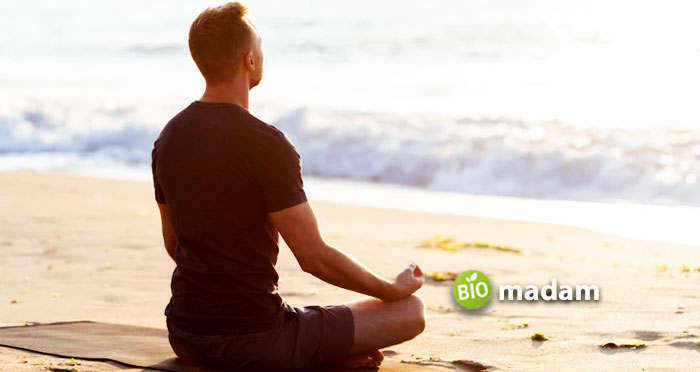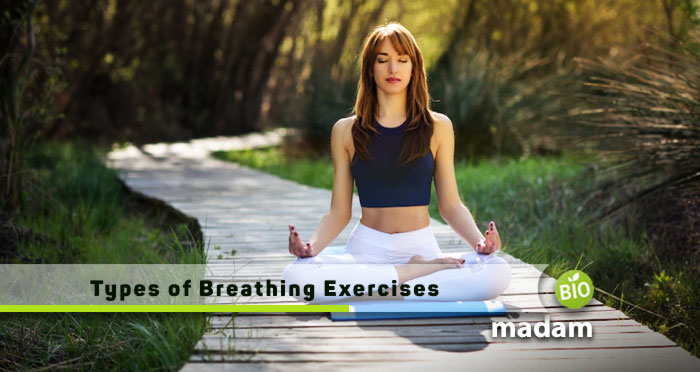Breathing is considered a basic body function, and people do not think much about it. But, when they experience abnormal breathing patterns, they come to realize that breathing is not as simple as it seems. A CRT or RRT might suggest different breathing exercises to overcome respiratory issues like asthma and COPD. Let’s look at the best breathing exercises to help you improve breathing.
Pursed Lip Breathing
People with lung conditions are suggested to practice pursed lip breathing as a part of the pulmonary rehabilitation program. This program comprises various breathing exercises and regimens for people with lung diseases, disorders, or conditions.
The pursed lips exercise involves tightly pressing your lips together and inhaling through the nose. Thus, the airway stays open for a long time. Eventually, the stale air is also expelled from the lungs properly to make room for fresh air.
Pursed lip breathing allows you to improve the diaphragm’s working and increase the oxygen influx to the lungs. It has proved to help people with anxiety-induced lung conditions like chronic bronchitis and emphysema.
How to Perform this Breathing Exercise
- Relax your face, neck, and shoulders
- Press your lips together to form a pursed shape
- While keeping your mouth closed, inhale from your nose while counting to two
- Now exhale slowly by expelling the air through the nose and count to four
- Make sure not to force exhalation and slowly let the air out
This exercise is helpful in case of breathlessness during activities like lifting, bending, and climbing stairs. You can do it anywhere, any time of the day, whenever you feel tired or short of breath.
Deep Breathing
Deep breathing is a simple breathing exercise that helps improve breathing. It relieves shortness of breath by avoiding the entrapment of air in the lungs. Thus, the fresh air reaches the base of the lungs to help you feel relaxed. It is considered an easy and effective method to deal with stressful situations. You may often see people telling you to breathe deeply in anxious or stressful conditions. That is because this exercise helps relieve anxiety and stress.
How to Perform this Breathing Exercise
- Draw your elbows slightly towards the back and relax the shoulders
- Inhale slowly and fill the lungs through your nose
- Count to five while inhaling to fill the lungs properly
- Release the air gradually through the nose while keeping the mouth closed
Diaphragmatic Breathing
Diaphragmatic breathing, also known as belly breathing, involves the diaphragm and strengthens it through exercise. The diaphragm represents 80% of breathing to help you feel rested and relaxed. This breathing exercise helps reduce stress induced by migraine, any eating disorders, and mental health issues like anxiety.
When the diaphragm does not work properly, your body uses other respiration muscles. It pushes the stress to the chest, neck, and back.
Initially, diaphragmatic breathing may feel tiring. However, you will feel relaxed as it will become natural.
How to Perform this Breathing Exercise
- Sit on a chair and lie on your back on any flat surface
- Relax your neck and shoulders so you do not put stress on them
- Place one hand on your chest and the other on the stomach
- Slowly breathe in without moving your chest; you should feel the expansion in your abdomen due to inhalation
- Slowly breathe out when you feel your belly has risen and filled
- You can now feel the hand on your stomach going down again
You can also place a book on your abdomen once you get comfortable with the exercise. Practice it 3 to 4 times every day for 5 to 10 minutes to improve breathing patterns. You may also combine belly breathing and paced breathing for better results. Do not overdo it; give your body enough time to adjust to something new.
Box Breathing
Box breathing is another simple yet beneficial exercise technique to help you relax. It is considered a helpful stress-coping strategy for people with stress management issues.
As the name indicates, box breathing follows a pattern in the form of a square to slow breathing. You must breathe when moving from the edge of one line to another. Relax on the other side and follow the same steps again. This exercise is especially helpful in boosting focus and concentration. Let’s see how to do this exercise step-by-step:
How to Perform this Breathing Exercise
- Sit comfortably on a chair and relax
- Sit straight so you can make the best of the exercise
- Close your mouth by joining your lips together
- Breathe through your nose slowly by counting to four
- Now hold your breath and count till four
- Exhale while counting to four as you did while inhaling
- Count to four again before you repeat the exercise
Resting your hands on your knees or lap can help your upper body relax better
Mindful Meditation
If you have not heard of mindful meditation for hypertension, you are missing out on an important exercise that can help manage high blood pressure. Mindful breathing or meditation requires you to focus on your breathing without being distracted. This breathing exercise has shown positive results for high blood pressure, stress, anxiety, and sleep deprivation.
The simplest mindful breathing technique requires you to focus on your natural breathing pattern and breathe properly. You do not have to exert extra effort following the natural breathing rhythm.
How to Perform this Breathing Exercise
- Sit in a calm place away from distractions
- Sit on a chair or lie on a flat surface
- Focus on your natural breathing pattern
- You may also repeat phrases like “Breathe in, breathe out” or “positive in, negative out”; these phrases help maintain a rhythm during this meditation exercise
- Perform this exercise until you feel relaxed

Coherent Breathing
Coherent breathing, also known as resonant breathing, involves the respiratory and cardiac reflexes managed by the autonomic nervous system. In simple words, coherent breathing acts on the respiratory patterns to influence cardiac rhythms. This method involves taking six breaths per minute for 5 seconds; inhale for five seconds and exhale in the next five seconds. Continue this process until you achieve five full breaths in one minute.
This process provides numerous health advantages, including immediate and long-term benefits. Coherent breathing regulates blood pressure, improves concentration, increases oxytocin production, and reduces symptoms of depression. You can also consult a doctor if you think you need any further assistance to rid off depression.
How to Perform this Breathing Exercise
- Sit on any surface comfortably
- Inhale slowly for five seconds
- Exhale in the next five seconds
- Repeat this process ten more times to achieve six full breaths in a minute
Alternate Nostril Breathing
The technique of this breathing exercise is quite evident from its name. This breathing pattern is common in yoga to help people relax and breathe better. Alternate nostril breathing improves respiration and helps alleviate stress and anxiety symptoms. It also improves cardiac function and regulates heart rate. This technique is known as the Nadi Shodhana Pranayama in Sanskrit. Here’s how you can perform the alternate nostril breathing exercise for improved breathing.
How to Perform this Breathing Exercise
- Sit in a comfortable chair or on the floor per your choice
- Expel all the air out of your system through a deep breath before starting the exercise
- The best way to perform alternate nostril breathing is to turn your index and middle finger inwards
- Bring your hand near your nose and close the right nostril with the first and middle fingers of the hand
- Now, close the left nostril with your ring and pinky finger releasing the thumb; exhale through the right nostril
- Breathe through the right nostril and close the right nostril with the thumb again
- Exhale through the left nostril
- This completes one cycle
- Repeat the process as many times as you can throughout the day
Perform this exercise at least once a day for five minutes. It is suggested to do it early in the morning on an empty stomach. Traditionally, you should avoid this exercise if you are congested.
Lion’s Breath
Opposed to other breathing patterns, a lion’s breath involves breathing through the mouth to help relax muscles. This exercise is adapted widely for stress relief. It releases tension in your face and chest through muscle exercises. This straightforward exercise may offer instant relief from stress and facial muscle tension.
How to Perform this Breathing Exercise
- Sit on a flat surface on your heels or cross your legs, whichever is more convenient for you
- Press your palms on your knees and open your hand wide
- Use your nose to inhale slowly but deeply while keeping your eyes open
- Keep your mouth open with your tongue sticking out
- Utilize your throat muscles when exhaling through your mouth and make a long sound
- Repeat this process two to three times in one setting
4-7-8 breathing
The 4-7-8 breathing is one of the best breathing exercises for improving sleep. Like mindful breathing, this technique also requires you to avoid distractions and focus on the process. Perform this exercise when you are in your bed and willing to sleep.
How to Perform this Breathing Exercise
Here’s how you can do this simple exercise for a good night’s sleep:
- Relax the muscles in your mouth, exhale properly, and rest the tip of your tongue against the mouth’s roof behind the front teeth
- Inhale fresh air through your nose for four seconds or count to four
- Hold your breath for seven seconds or till a count of seven
- Exhale loudly through your mouths, accounting for around eight seconds, or count till eight
- Repeat the process three more times to complete the count of four breaths per cycle
Performing this technique daily for some time can improve sleeping patterns. You will get used to it. Yet, if you find this exercise difficult, you can slightly speed up the process. But make sure to count to 4, 7, and 8, as suggested.
Equal Breathing
While most breathing exercises have different inhalation and exhalation times, equal breathing is similar to box breathing. It makes exhaling and inhaling of the same length. Known as Sama Vritti in Sanskrit, this technique brings balance and focus. It is also used in Yoga exercises to improve breathing.
How to Perform this Breathing Exercise
- Sit on the floor in a comfortable sitting position
- Breathe in through your nose and slowly breathe out
- Make sure that the inhale and exhale duration are the same
- Continue this exercise for 5 minutes with or without pauses according to your convenience
Do not take too long or too short breaths. Choosing a breath length a notch higher than the easiest is suggested. Counting between 3 and 5 for every breath is the best choice.

Humming Bee Breath
The humming bee breath is another important element of yoga and is commonly known as Bhramari. The procedure gets its name from the humming sound produced during the exercise. This technique is believed to be excellent for people shaking from anxiety, frustration, and anger, as it calms you instantly. The unique method helps soothe the muscles around your forehead. Practice it in a quiet, calm place, so you do not have to worry about the humming sound.
How to Perform this Breathing Exercise
- Relax your facial muscles and close your eyes after sitting in a comfortable position
- Place the first finger of both hands on each ear (particularly on the Targus cartilage)
- Now inhale while keeping your fingers on your ears
- Press the cartilage slightly as you expel the air and make a loud humming sound keeping your mouth closed
- Repeat this as many times as you are comfortable
The Bottom Line
Breathing exercises can be a simple and effective way of relieving stress and improving breathing. They are easy to do and help you breathe better over time. You can start with simple exercises like deep breathing and eventually move to others like box breathing, humming bee breath, coherent breathing, and lion’s breath. 4-7-8 breathing and mindful breathing are particularly beneficial in relaxing your mind without being distracted. Try these exercises to reduce anxiety, stress, and depression. Click here to look for more ways to help somebody with depression.

Hi, my name is Eva. I am currently practicing as a clinical social worker, that being my childhood desire. As a licensed therapist holding MPhil in Clinical Psychology, I am now on biomadam to provide the natives with the best family advice! Do you have any questions? See you in the comment section.

